If you’ve noticed your pet’s gums looking more swollen than usual, it could be a sign of gingival hyperplasia—a condition where the gum tissue grows excessively. Although it might initially appear as a superficial or cosmetic issue, this excessive growth of the gingival tissue can lead to significant oral health problems if not addressed promptly. Understanding the cause and progression of gingival hyperplasia is crucial for implementing effective treatment plans. Our North Bay Veterinary Dentistry team is committed to providing comprehensive care, and in this overview, we’ll explore the presentation, diagnostic techniques, therapeutic interventions, and preventive strategies that are essential for managing gingival hyperplasia.
What is gingival hyperplasia?
Gingival hyperplasia is a condition characterized by gingival overgrowth around the teeth that can lead to a variety of problems, including dysphagia (difficulty eating), halitosis (bad breath), and an increased risk of periodontal disease. The overgrown tissue can create a “psuedo-pocket” around the teeth, trapping food debris and bacteria, leading to plaque and tartar accumulation. If left untreated, this can progress to periodontal disease, causing pain, tooth loss, and even systemic health complications. The condition is more commonly seen in dogs, particularly certain breeds, but also can affect cats.
Cats can also suffer from a form called juvenile feline hyperplastic gingivitis, a feline-specific type of gingival hyperplasia that typically develops between 7 and 10 months of age when the teeth are erupting.
What causes gingival hyperplasia in pets?
Gingival hyperplasia can arise because of several factors, including:
- Idiopathic– In some cases, the causative factor remains unidentified.
- Genetics — Certain breeds are predisposed to this condition. In dogs, short-muzzle (brachycephalic) breeds like boxers, bulldogs, Boston terriers, and pitbull terriers are among the most commonly affected. In cats, the condition is less breed-specific—except in juvenile cases—but still significant. Breeds like Maine coons, Siamese, Abyssinians, and Somali cats are more susceptible, although any young cat can be affected.
- Medications — Some drugs, particularly specific immunosuppressants and calcium channel blockers, can lead to gingival overgrowth. Cyclosporine, amlodipine, and enalapril are medications that have a risk of causing gingival hyperplasia.
- Inflammation and infection — Periodontal disease caused by chronic inflammation, plaque, tartar, or infections in the mouth can trigger an overgrowth response in the gum tissue.
What are gingival hyperplasia signs in pets?
Recognizing gingival hyperplasia is crucial for early intervention. Common signs include:
- Enlarged, Swollen gums — The most obvious sign is gingival enlargement around the teeth. The enlargement can be so severe that the tooth is covered completely, causing it to appear to be missing. Other pets may have only localized enlargement; it can be asymmetrical or symmetrical, and involve just one or multiple dental quadrants. It can also look like a nodule, mass, or growth.
- Bleeding gums — You may notice bleeding, especially when eating or chewing on toys.
- Bad breath — Persistent bad breath (i.e., halitosis) is often associated with oral health issues.
- Difficulty eating — Overgrown gums can make eating painful and difficult.
- Visible plaque or tartar — Excessive gum tissue can trap food and debris where bacteria thrive, leading to plaque and tartar buildup.
How is gingival hyperplasia diagnosed in pets?
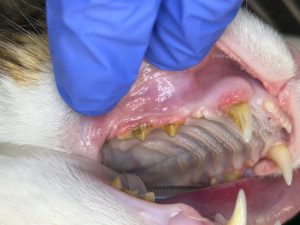
If you suspect your pet has gingival hyperplasia, a veterinary visit is essential. Diagnosis typically involves:
- Physical examination and blood panels — A thorough exam and laboratory work is necessary to ensure the pet has no other medical issues. An oral exam to assess the extent of gum overgrowth and identify any underlying issues is also performed. Sedation or anesthesia may be required to obtain a full oral exam.
- Dental Imaging — Radiographic images and/or CT can help to evaluate the health of the teeth and jawbone and to detect any hidden periodontal disease.
- Biopsy — A small sample of gum tissue may be biopsied to rule out cancer or other serious conditions.
How is gingival hyperplasia treated in pets?
The primary goal in treating gingival hyperplasia is to restore your pet’s oral health and comfort. Treatment options include:
- Professional dental cleaning — A thorough dental cleaning to remove plaque and tartar helps reduce gingival inflammation.
- Gingivectomy — Gingivectomy or gingivoplasty is the surgical removal of the excess gum tissue. This is often required for advanced or severe cases, or cases where the pet has discomfort. Some pets will need this periodically to control their overgrowth.
- Medication adjustment — If the condition is drug-induced, your primary care veterinarian may adjust the medication dose or prescribe alternatives.
- Home care — Ongoing home care, including stringent toothbrushing and using oral rinses regularly, can help manage and prevent recurrence.
How can I prevent gingival hyperplasia in my pet?
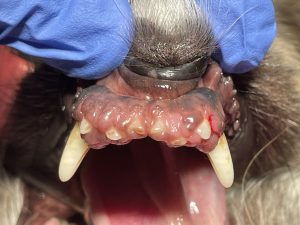
While not all gingival hyperplasia cases can be prevented, good oral hygiene practices, such as the following, can significantly reduce the risk:
- Regular oral exams and dental cleanings — Annual or biannual dental check-ups with your veterinarian are essential for early detection and management of oral health issues.
- Daily brushing — Brushing your pet’s teeth daily with a pet-safe toothpaste can help prevent plaque buildup and gum disease.
- Healthy diet — Providing a balanced diet with dental-friendly treats can promote oral health.
- Safe chew toys — Safe chew toys can reduce plaque and tartar and help keep your pet’s teeth clean.
Gingival hyperplasia, while a manageable condition, can significantly impact your pet’s oral comfort if left untreated. Early diagnosis and intervention are critical for preventing pain and further oral disease. If you notice red, swollen, or enlarged gums in your pet, schedule an oral exam with your primary care veterinarian or our North Bay Veterinary Dentistry team.

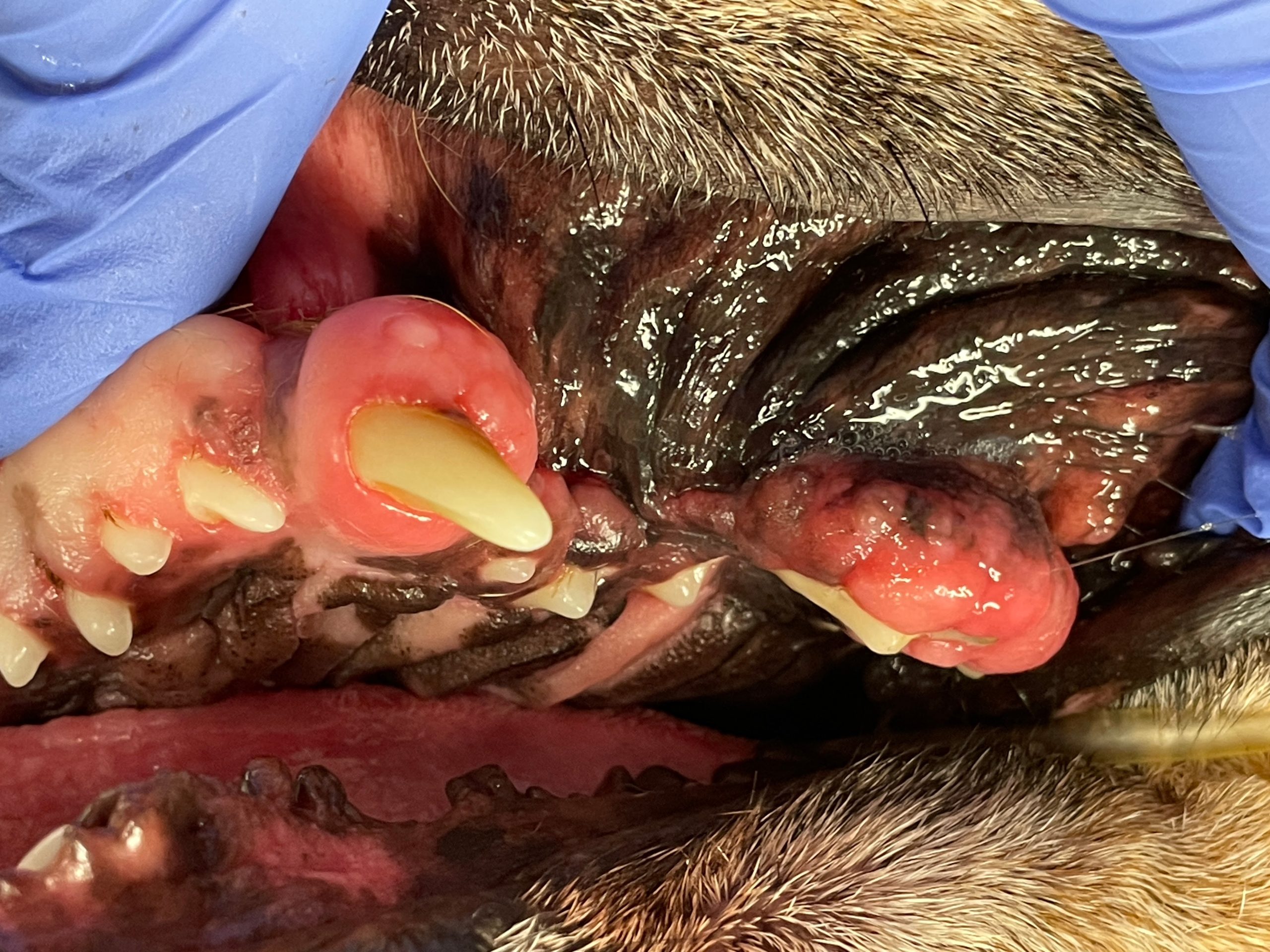
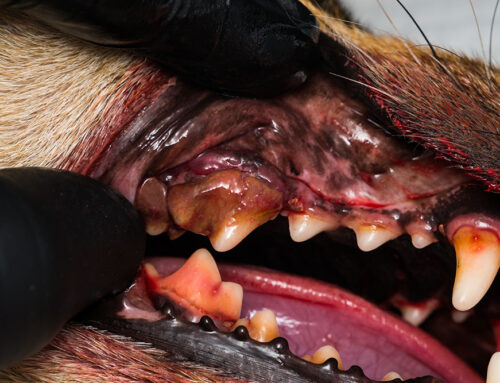

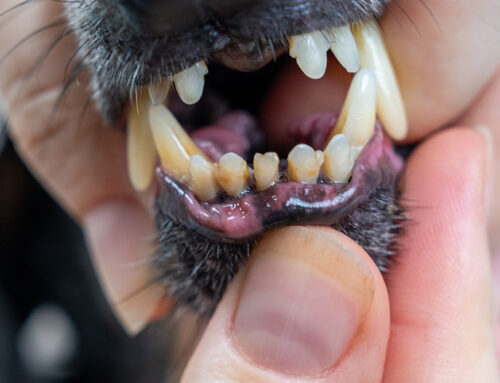

Leave A Comment